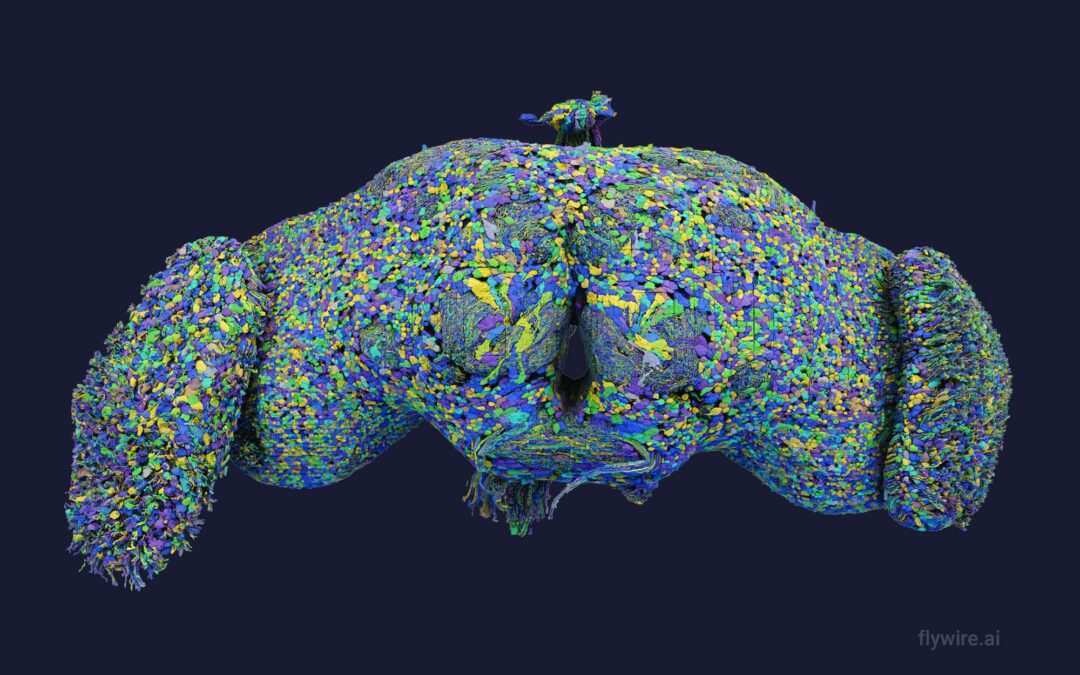
by Grace Ebert | Oct 5, 2024
The study produces the most detailed map of an animal’s brain in existence.
Do stories and artists like this matter to you? Become a Colossal Member today and support independent arts publishing for as little as $7 per month. The article Scientists Release an Astounding, Detailed Map of a Fly Brain in Groundbreaking Study appeared first on Colossal.

by Komoneed | Oct 4, 2024
California is tackling the problem of textile and fashion waste with the country’s first law that requires clothing companies to implement a recycling system for the garments they sell. Governor Gavin Newsom recently signed SB 707, the Responsible Textile Recovery Act. The new law requires a clothing, apparel and textile extended producer responsibility (EPR) program, […]
The post California Passes First U.S. Clothing Recycling Law appeared first on EcoWatch.

by Komoneed | Oct 4, 2024
Resilience at Scale: A New Paradigm for Infrastructure Investments
jschoshinski
Wed, 10/02/2024 – 18:59
Please join the CSIS Sustainable Development and Resilience Initiative to examine the importance of U.S. government climate-resilient infrastructure investments in developing countries around the world, and best practices for applying a systems approach to infrastructure planning and design in the face of extreme weather. The event will also serve to launch “Resilience at Scale: A Systems Approach to Climate-Resilient Infrastructure Planning,” a report developed through an interagency process led by the U.S. Agency for International Development (USAID) and the Millennium Challenge Corporation (MCC) in support of the President’s Emergency Plan for Adaptation and Resilience.
Infrastructure projects are often focused on specific roads, buildings, dams, ports, and other critical facilities, but such individual assets are each a part of broader networks that can face climate-change related disruptions and cascading failures. A hospital becomes inaccessible, regardless of whether it is designed to be resilient, if the access roads and bridges that lead to it are damaged by a storm. Even though U.S. agencies have been systematically screening their international development investments for climate risks in accordance with an executive order since 2014, government investments and partnerships in climate-vulnerable countries need to go further by transitioning to a systems approach to climate resilience planning.
This event is an opportunity to better understand some of the institutional, technical, and financial barriers to such a systems approach, and how U.S. government agencies, working to implement PREPARE, aim to overcome them. It will also serve as another window into the latest thinking about the emerging resilience economy around the world and how it relates to U.S. security and economic interests.
A light networking reception will immediately follow the event.
Event Date
Thursday, October 10, 2024, 10:00
– 11:30 am EDT
(2:00 – 3:30 pm UTC)
Advanced registration required
Off
External Link
Register Here
Event Format
Virtual
In-Person
Event Type
Webinar/Presentation
Topic
Adaptation
Infrastructure
Resilience
Strategic Objective
Adaptation
Sectors
Adaptation
Infrastructure
Region
Global
Add to calendar
Add to Calendar
2024-10-10 14:00:00
2024-10-10 15:30:00
Resilience at Scale: A New Paradigm for Infrastructure Investments
Please join the CSIS Sustainable Development and Resilience Initiative to examine the importance of U.S. government climate-resilient infrastructure investments in developing countries around the world, and best practices for applying a systems approach to infrastructure planning and design in the face of extreme weather. The event will also serve to launch “Resilience at Scale: A Systems Approach to Climate-Resilient Infrastructure Planning,” a report developed through an interagency process led by the U.S. Agency for International Development (USAID) and the Millennium Challenge Corporation (MCC) in support of the President’s Emergency Plan for Adaptation and Resilience.
Infrastructure projects are often focused on specific roads, buildings, dams, ports, and other critical facilities, but such individual assets are each a part of broader networks that can face climate-change related disruptions and cascading failures. A hospital becomes inaccessible, regardless of whether it is designed to be resilient, if the access roads and bridges that lead to it are damaged by a storm. Even though U.S. agencies have been systematically screening their international development investments for climate risks in accordance with an executive order since 2014, government investments and partnerships in climate-vulnerable countries need to go further by transitioning to a systems approach to climate resilience planning.
This event is an opportunity to better understand some of the institutional, technical, and financial barriers to such a systems approach, and how U.S. government agencies, working to implement PREPARE, aim to overcome them. It will also serve as another window into the latest thinking about the emerging resilience economy around the world and how it relates to U.S. security and economic interests.
A light networking reception will immediately follow the event.
Global Climate Change
team@climatelinks.org
UTC
public

by Komoneed | Oct 4, 2024
This post was originally published on The Art NewspaperA Federal Emergency Management Agency programme is using art to raise awareness of flood risks and build resilience in...

by Komoneed | Oct 4, 2024
Kia is challenging premium seven-seat SUV rivals with its all-electric EV9 flagship. We pitch it against the Volvo XC90 to see if it’s got what it takes





